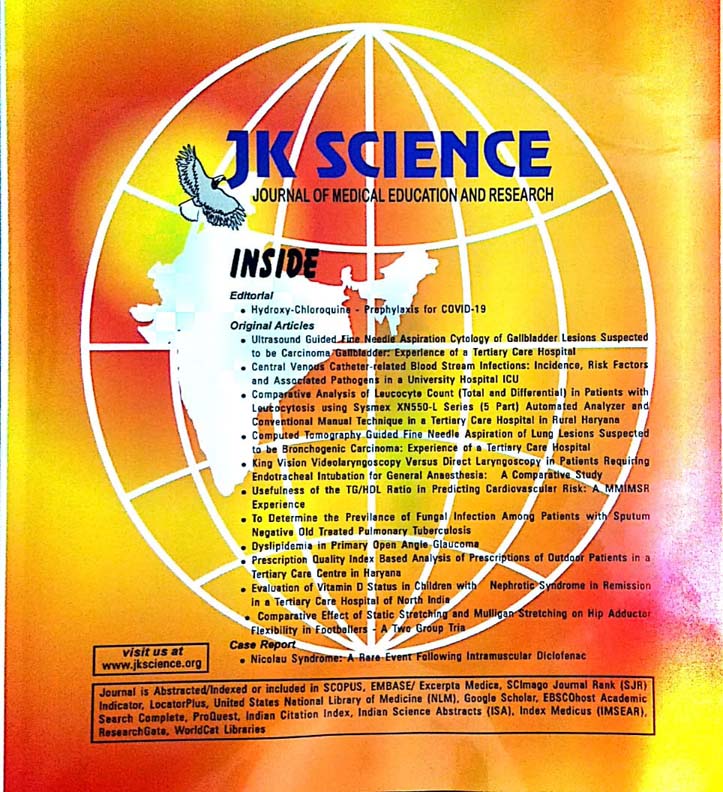To Compare the Effect of Flexion and Extension on Unilaterality of Spinal Anaesthesia in Lateral Decubitus Position Using Low Dose Hyperbaric Bupivacaine
Keywords:
Cauda Equine, Lateral Decubitus Position, Unilateral Spinal AnaesthesiaAbstract
Background and Aims: Unilateral spinal anaesthesia is a safe and easy technique for lower limb surgeries. Therefore, this study was carried out to analyse the effect of flexion and extension on unilaterality of spinal anaesthesia in lateral decubitus position.
Material and Methods: The study was conducted on seventy patients posted for elective unilateral lower limb surgeries. They were randomly allocated into two groups, patients in group F maintained spinal flexion in lateral decubitus position for 15 minutes, whereas those in group E extended their hips and knee immediately after spinal anaesthesia with 8 mg of 0.5% hyperbaric bupivacaine. Patients remained in lateral decubitus position for 15 minutes and then turned supine.
Results: Strict unilateral sensory block at 15 minutes was present in 32 patients in group F and 7 patients in group E (P-value<0.05). At 15 minutes, strict unilateral motor block was present in 23 patients in group F and in only 10 patients in group E (P-value<0.05). The mean time taken to reach Bromage 4 in dependent limb was 15.29 min in group F and it was 15.14 min in group E, which is comparable (P-value>0.05).
Conclusion: Maintaining flexion of spinal column for 15 min increases the probability of unilateral spinal block in comparison to extension of spine in lateral decubitus position.
Downloads
Downloads
Published
How to Cite
Issue
Section
License
Copyright (c) 2023 JK Science: Journal of Medical Education & Research

This work is licensed under a Creative Commons Attribution-NonCommercial-ShareAlike 4.0 International License.





